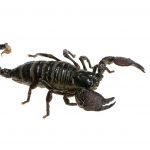On earth, there are over 3,000 different species of snakes to choose from, so there are many possibilities. The largest snakes on this list were chosen because of their vast size, which is why they are included. Snakes that were long and weighted a significant amount were given a higher ranking on the list.
Green Anaconda
- Scientific Name: Eunectes murinus
- Type of Animal: Reptile
- Diet: Carnivore
- Length: 20-29 feet

Goosebumps may emerge on your arms after encountering a green anaconda. Yes, this ophidian has been known to grow to be up to 30 feet in length! This boa species snake, sometimes known as the Giant Anaconda, can only be found in South Africa and is a member of the boa family. This non-venomous snake makes up for its lack of fatal venom by packing a punch that is unmatched in its size and strength.
When captive-bred, green anacondas can occasionally be kept as benign, even peaceful, pets by snake enthusiasts. However, because they are so large and still technically a snake, they are not an ideal companion for newbies. The green anaconda, which can grow up to 30 feet in length and weigh up to 550 pounds, is unquestionably the king of the serpents. Because swimming is far easier for this species than dragging its vast size across the land, it has evolved to a water-based lifestyle, making its home in rivers, swamps, and marshes. In response, the eyes and nostrils of green anacondas have evolved to be on the top of their heads, allowing them to breathe and see while the rest of their body is submerged.
Reticulated Pythons
- Scientific Name: Malayopython reticulatus
- Type of Animal: Reptile
- Diet: Carnivore
- Length: 33 feet

It is possible for them to grow to be as long as 33 feet in length, making them the world’s longest snakes. While the average Reticulated Python is somewhat longer than the average green anaconda, the latter is far wider, stronger, and weighs significantly more than the former. Reticulates is not the world’s largest snakes because of their small size.
Reticulated pythons search for prey by using their senses of smell and infrared to locate prey in their environment. Just like other constrictors, they suffocate their prey until they are on the verge of death before devouring the body whole. They eat a variety of things, including rats, boars, deer, and birds. Due to their reputation as vicious snakes, reticulated pythons are not widely available for purchase as pet animals. The smooth dorsal scales of the Reticulated Python have a multi-colored geometric pattern that protects it from predators while also allowing it to entangle its prey and catch it.
Amethystine Python
- Scientific Name: Morelia amethistina
- Type of Animal: Reptile
- Diet: Carnivore
- Length: 27 feet

In addition to its home in Indonesia, Papua New Guinea, and Australia, the Amethystine Python is a non-venomous snake that belongs to the Pythonidae family. A 27-foot-long Python, known locally as the Scrub Python or Sanca Permata by the villagers who had the most frequent encounters with it, this creature is also known as the Scrub Python. Anemystine is the longest snake in Australia, and it feeds on a variety of prey such as fruit bats, mice, possums, monitor lizards, and even some birds (depending on their size).
Burmese Pythons
- Scientific Name: Python bivittatus
- Type of Animal: Reptile
- Diet: Carnivore
- Length: 23 feet

Burmese pythons are one of the most misunderstood reptiles in the United States and with good reason. Their ability to adapt and thrive, as well as their ability to push some Everglades species to extinction, has given them a bad reputation. Nonetheless, from an evolutionary standpoint, they are a textbook example of a successful species in a given environment.
Because of their beautiful patterns and generally calm temperament, Burmese pythons are an excellent choice for anybody looking to keep a large snake as a pet. The problem is that when they reach their maximum size (which may exceed 23 feet), untrained owners find care for them to be too difficult or dangerous, and they are generally released back into the wild. They are also great swimmers, with the ability to hold their breath for up to 30 minutes at a time in water. Because of this, even animals that dwell in water are susceptible to the effects of this constrictor.
In the Everglades, Burmese pythons frequently engage in fights with and devour alligators. When it comes to breeding, Burmese pythons are lonely creatures who only get together in the spring. It is possible for females to lay up to 100 eggs, each of which will hatch after three months. Unfortunately, because of rampant poaching, Burmese pythons are now considered to be critically endangered species.
Indian Rock Python
- Scientific Name: Python molurus
- Type of Animal: Reptile
- Diet: Carnivore
- Length: 21 feet

The Indian Rock Python is a non-venomous species that may be found in tropical and subtropical climates in India, Pakistan, Nepal, Sri Lanka, Bhutan, Bangladesh, and Myanmar, among other places. Although this venomous serpent may grow up to 20 feet in length, the majority of Indian Rock Pythons are approximately 9.8 feet in length when fully mature.
This is because the Burmese python is a subspecies of the Indian python, which explains why they have such striking physical similarities; their skins have a rectangular mosaic-like pattern, which is similar to that of the Indian python.
In contrast, Burmese pythons are darker in color and grow to be much greater in size. Similar to green anacondas, female Indian pythons are significantly larger than males. They, too, live solitary lives, only coming together to mate once a year. Female Indian pythons are capable of laying up to eight eggs, each of which weighs around 7.3 ounces.
King Cobra
- Scientific Name: Ophiophagus hannah
- Type of Animal: Reptile
- Diet: Carnivore
- Length: 13 feet

The king cobra may grow to be 13 feet in length and weigh up to 20 pounds in weight. Besides being one of the world’s largest snakes, the king cobra is also the world’s longest deadly snake, measuring over a mile in length! They may be found in tropical rainforests in India and Southeast Asia, as well as in Africa.
This is because when these snakes ‘stand up,’ or lift the top half of their bodies off the ground in response to a threat, they may look considerably larger than they already are. It has a vulnerable conservation classification, although it is a protected species in Vietnam, where it is illegal to trade-in.
African Rock Pythons
- Scientific Name: Python sebae
- Type of Animal: Reptile
- Diet: Carnivore
- Length: 10-16 feet
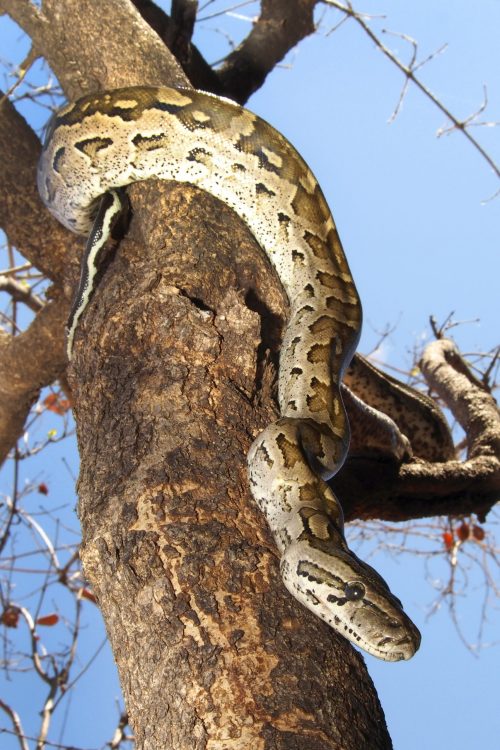
African rock pythons, like other snakes, are solitary creatures that only seek out other members of their own species for reproduction. Rock pythons are nocturnal snakes, which distinguishes them from the majority of other reptiles. During the night and early morning, however, juveniles are more active than adults are. When they were younger, they used to prey on small things such as lizards and rats for food.
After reaching adulthood, almost every other animal on the continent, with the exception of large carnivores and herbivores, is fair game for hunters. African rock pythons do not make good pets because of their aggressive behavior. They are being targeted for their flesh and skin at an increasingly rapid pace. The African Rock Python is a large, violent snake that has a reputation for biting humans. It may grow to be up to 16 feet in length.
Black Mamba
- Scientific Name: Dendroaspis polylepis
- Type of Animal: Reptile
- Diet: Carnivore
- Length: 14 feet

The Black Mamba may grow to be as long as 14 feet in length. This poisonous snake may be found in the savannas of eastern and central Africa, where it is extremely dangerous. The tiny black mamba weighs only about 3 pounds, making it simpler for it to travel at a speed of 12.5 miles per hour thanks to its long, slender physique. This reptile has a stable population and is thus considered to be of least concern.
- Boa Constrictor
- Scientific Name: Boa constrictor
- Type of Animal: Reptile
- Diet: Carnivore
- Length: 13 feet

The Boa constrictor and the king cobra are both capable of reaching lengths of 13 feet. For its part, the boa constrictor is rated higher on the list because it is the heavier of the two creatures, coming in at 60 pounds. Boa constrictors are around 2 feet in length when they are born. It is no surprise that they’re one of the world’s largest snakes, given their size. These snakes are found only in South America. Some are found in tropical rainforests, while others can be found in semi-arid settings.
King Brown Snake
- Scientific Name: Pseudechis australis
- Type of Animal: Reptile
- Diet: Carnivore
- Length: 11 feet
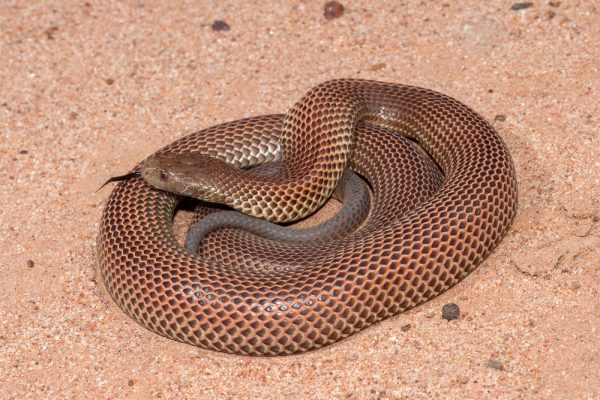
The king brown snake may grow to be as long as 11 feet in length. Despite its 11-foot length, this snake is just roughly 13 pounds in weight, according to the manufacturer. This deadly snake may be found in the grasslands, woodlands, and scrublands of central Australia’s arid interior. Its yellow and brown scales let it blend in with its environment as it glides around the ground in search of frogs and lizards with its extended body. Because of its declining population, it has been classified as Least Concern for conservation purposes.
Papuan Olive Python
- Scientific Name: Apodora papuana
- Type of Animal: Reptile
- Diet: Carnivore
- Length: 13 feet
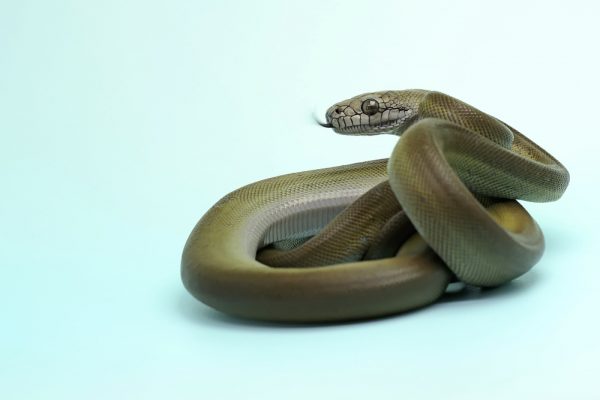
The Papuan Olive Python is a solitary species that may be found in deep forest sections of Papua New Guinea’s interior. For the simple reason that we don’t know very much about them in comparison to the knowledge, we’ve accumulated about other snake species. We do know that they are not very aggressive toward humans, that they prey on small animals, and that the normal Papuan Olive Python may grow to be approximately 13 feet in length, but that is about all we know about them. The Papuan Olive Python, in contrast to several other pythons, is not exceptionally huge, weighing an average of 50 pounds on a per capita basis.
Yellow Anaconda
- Scientific Name: Eunectes notaeus
- Type of Animal: Reptile
- Diet: Carnivore
- Length: 15 feet

Anacondas are huge snakes in their own right; the yellow anaconda, which is endemic to South America, may reach lengths of up to 15 feet and weigh up to 121 pounds. They are also poisonous. Because the predominant hue of the snake’s color pattern is yellow, the name “yellow snake” was given to it. When it comes to this species, like with green anacondas, the females are significantly larger than the males. This species enjoys living in and around water as well as on land. Yellow anacondas, in contrast to green anacondas, are known to often travel onto land in search of terrestrial food.
Despite this, the most majority of their prey are aquatic or semi-aquatic animals such as fish, amphibians, birds, small mammals, and reptiles, with the exception of a few terrestrial species. When a female yellow anaconda reaches sexual maturity, she emits a pheromone that draws the attention of nearby males, attracting them to her. When the several men come, as predicted, the scene will be nothing short of a nightmare: a breeding ball of snakes, twisting and curling, with numerous snakes wrapped up into a breeding ball of snakes. Furthermore, most courtships take place in or around water. After around six months, the female gives birth to up to 82 young ones, all of whom must be left to fend for themselves immediately.
- Eastern Indigo Snake
- Scientific Name: Drymarchon couperi
- Type of Animal; Reptile
- Diet: Carnivore
- Length: 8 feet
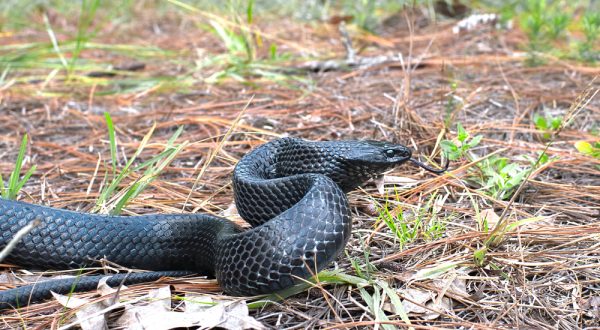
Known as the eastern indigo snake or blue indigo snake, the eastern indigo snake is a large non-venomous colubrid snake that may be found across the eastern United States and Canada. The Eastern Indigo Snake is the longest snake in North America, reaching an average length of 7.7 feet for males and 6.6 feet for females. The biggest Eastern Indigo ever recorded, on the other hand, was 9.2 feet in length. When cornered or threatened, the eastern indigo snake flattens its head, hisses, and vibrates its tail, creating a rattling sound that imitates the rattlesnake’s lethal rattle. Despite this, these snakes are only sometimes poisonous.
Eastern Diamondback Rattlesnake
- Scientific Name: Crotalus adamanteus
- Type of Animal: Reptile
- Diet: Carnivore
- Length: 4-5 feet
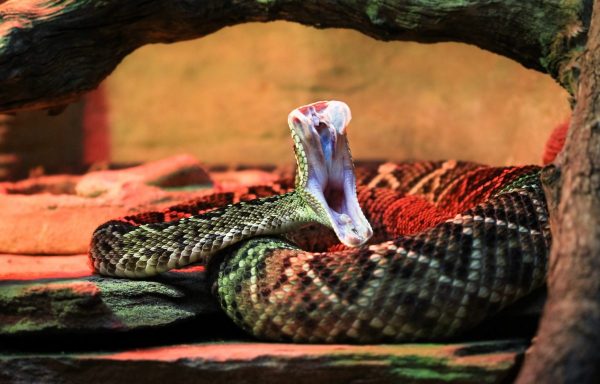
The Eastern diamondback rattlesnake is a very deadly pit viper that may be found across the southeastern United States and parts of Canada. It is the heaviest deadly snake known in the Americas, albeit it is not the longest. It is also the largest of the 32 species of rattlesnakes that have been identified so far. Rabbits and other small creatures have been reported to be eaten by the East Diamond Rattleback, which weighs roughly 10 pounds. Over the course of their 15- to 20-year existence, these native to the United States snakes may grow to reach 7 feet, 8 inches long and weigh up to 34 pounds, making them the world’s longest and heaviest rattlesnake species, respectively.
Inland Taipan
- Scientific Name: Oxyuranus microlepidotus
- Type of Animal: Reptile
- Diet: Carnivore
- Length: 8 feet

The Inland Taipan is a deadly taipan snake that may be found in semi-arid parts of central and eastern Australia’s central and eastern regions. They may grow to be up to 8 feet long and weigh up to 22 pounds at their heaviest. While being extremely venomous and capable attackers, this serpent species is typically a peaceful and reclusive one, in contrast to its more aggressive brother, the coastal taipan, which is more hostile in nature. Because of its placid demeanor, it tends to stay out of trouble; nevertheless, if mishandled, disturbed, or prevented from running, it will defend itself and strike.
Coastal Taipan
- Scientific Name: Oxyuranus scutellatus
- Type of Animal: Reptile
- Diet: Carnivore
- Length: 8 feet
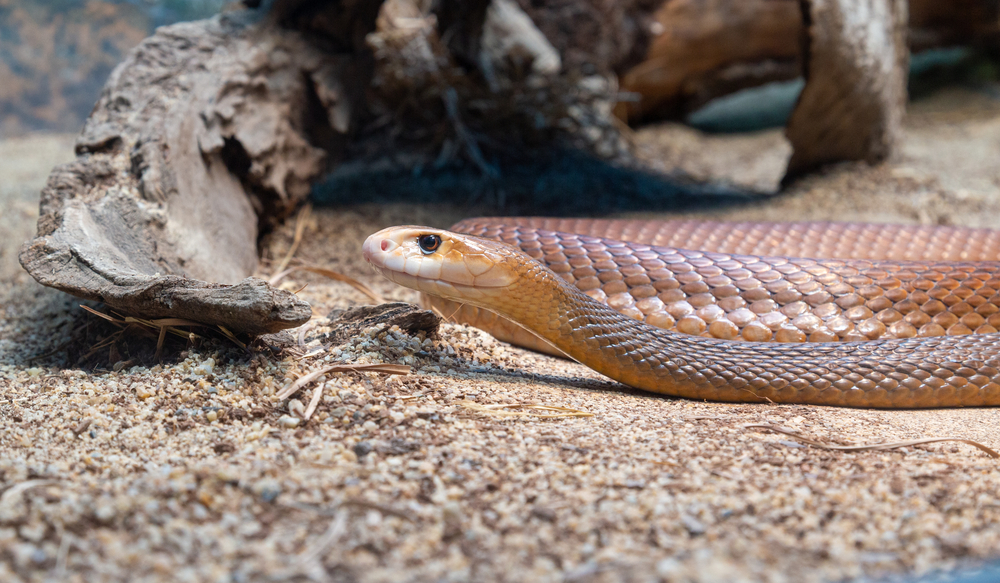
In addition to being known as the coastal taipan, it is also known as the common or eastern taipan. An extremely toxic snake belongs to the family Elapidae. In general, the upper side of the coastal taipan is a continuous light to dark brown, although it can be almost completely black in certain cases. There are irregular yellow or orange spots on their bellies, which are either creamy or golden in hue.
During the winter months, the color of the snake’s scales deepens, helping it to absorb more heat from the sun when it is sunbathing in the summer. They may grow to be up to 8 feet long and weigh up to 22 pounds at their heaviest.
Fer-de-lance
- Scientific Name: Bothrops asper
- Type of Animal: Reptile
- Diet: Carnivore
- Length: 4-6 feet
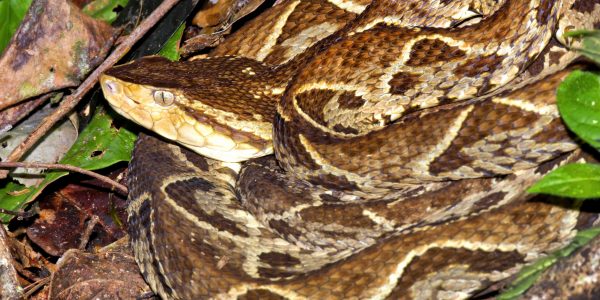
Terciopelo (also known as fer-de-lance) is a highly poisonous pit viper that may be found across South and Central America, as well as northern South America. Throughout Central America, these deadly snakes are feared because they are common, difficult to notice, and quick to attack and bite if they are disturbed, whether voluntarily or unintentionally. The fer-de-lance is a kind of fer-de-lance that may grow to be 4 to 6 feet long and weigh up to 13 pounds. It is the largest of the fer-de-lance species. Feminine bodies are noticeably larger than male bodies, with thicker and heavier structures that can be up to 10 times the size of men’.
Eastern Brown Snake
- Scientific Name: Pseudonaja textilis
- Type of Animal: Reptile
- Diet: Carnivore
- Length: 7 feet
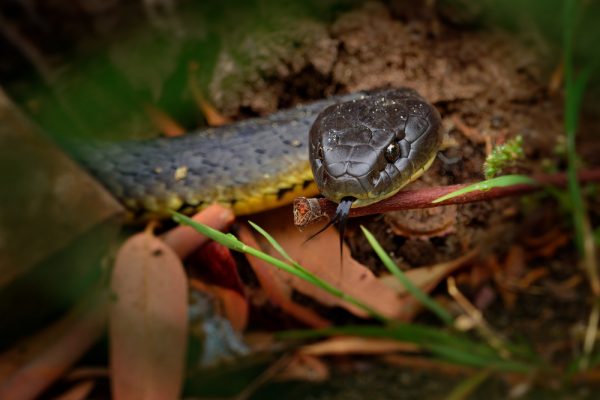
Although the Eastern Brown snake, also known as the Common brown snake, is a poisonous elapid snake, it can be found throughout eastern Australia, with the exception of Tasmania. There are no recognized subspecies of this animal. They are often orange or brown in color, however, they are available in a wide range of hues ranging from light to dark brown to nearly black.
A pale cream, yellow, or orange tint is usually found on the belly, with streaks of orange or dark grey appearing here and there. The average length of an eastern brown snake ranges from 3.6 to 5.9 feet in length. Any snake that is longer than 6.6 feet is considered extraordinarily large, despite the fact that the species’ maximum-recorded length is 7.9 feet long. A rounded, tiny head that fades into the neck distinguishes them from other species. In this species, males grow to be much larger than females.
Gaboon Viper
- Scientific Name: Bitis gabonica
- Type of Animal: Reptile
- Diet: Carnivore
- Length: 6 feet

The Gaboon Viper is a deadly viper that may be found throughout Africa’s equatorial belt, East and Central Africa, and Southeast Africa. It is a member of the viper family. Guinea-Bissau, Angola, and northern Mozambique are among the African countries that speak Portuguese as a second language. The Gaboon viper is the heaviest poisonous snake in Africa and the largest member of the genus Bitis. It is also the most dangerous. In certain cases, it can grow to be 6 feet long and weigh up to 20 kilograms, depending on the circumstances.
Green tree python
- Scientific Name: Morelia viridis
- Type of Animal: Reptile
- Diet: Carnivore
- Length: 5 feet

The green tree python is a colorful constrictor snake that may be found in the tropical rainforests of New Guinea, Australia’s Cape York Peninsula, the Solomon Islands, and a few Indonesian islands. It is the world’s largest constrictor snake by length. It may also be found in Florida, where it is considered an invasive species, along with the Burmese python and the African rock python, among other things.
In general, this snake develops to be 5 to 6 feet long, while some larger females can grow to reach up to 6 and a half feet in length. The size of the creature changes depending on where it was born. According to their nutritional status, males can weigh between 1.1 and 1.4 kg, while females can weigh up to 1,6 kg, depending on their size. When it comes to most snake species, females are bigger and heavier than males; in fact, some of the largest individuals may weigh up to 2.2 kg.
How Do the Sizes of the Biggest Spiders Compare to the Biggest Snakes?
In terms of size, the biggest spiders legs/body size can vary greatly compared to the biggest snakes. While the largest snakes, such as the reticulated python, can reach lengths of over 25 feet, giant spiders like the Goliath birdeater have an impressive leg/body size ratio. Despite their smaller body size, their long legs make them exceptionally formidable.
Do the Biggest Snakes in the World Show Signs of Anger?
Snakes and anger explored: The biggest snakes in the world may seem intimidating, but do they truly exhibit signs of anger? These serpents, such as the reticulated python and the green anaconda, are often misunderstood. While they may display defensive behaviors, interpreting them as anger can be misleading. These reptiles primarily use defensive postures to protect themselves rather than showcasing emotional states like anger. Understanding their natural instincts and behaviors is key to appreciating these magnificent creatures.
Ball Python
- Scientific Name: Python regius
- Type of Animal: Reptile
- Diet: Carnivore
- Length: 4 feet

The Ball Python is found in large numbers throughout West and Central Africa, with populations spanning from Uganda and South Sudan through Nigeria, Liberia, Guinea, and Sierra Leone, among other places. A large number of countries, including the Central African Republic, Cameroon, Benin, Congo, Côte d’Ivoire, Senegal, Gambia, Ghana, Guinea-Bissau, Mali, Niger, Sierra Leone, and Togo, are included in its extensive offering.
Among these are the Central African Republic, Benin, Congo, Côte d’Ivoire, Senegal, Gambia, Ghana, Guinea-Bissau, Mali, Niger. The Ball python can grow to be 6 feet long, but on average it is just 4 feet long and weighs roughly 2 kg, making it the smallest of the African pythons and the smallest of the African snakes. Females are frequently larger in stature than males. They’ll be between 10 and 15 centimeters in diameter. There have been no attempts to identify subspecies of this species.


